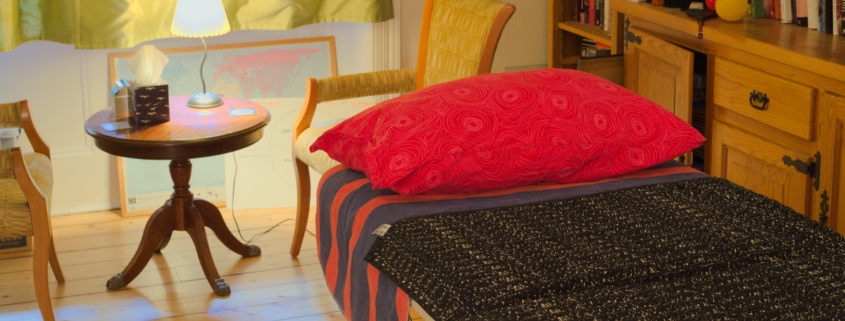(Transcript of my talk at the Centre for Contemporary Arts, Glasgow, 23/11/2019, as part of The Glasgow Sex Lectures, for the video, see the Home Page of this website)
I have an unusual background for someone working in the field of sexuality: I was a divorce lawyer for more than 30 years. My office was about 800 yards from here.
In Scotland, you need to give a reason to get a divorce. You either need to have been living apart for a minimum period, or there needs to be behavioural grounds; essentially adultery or unreasonable behaviour: violence, drunkenness, general craziness. So we’d always need to establish that before going on to arguing about the house, or the money, or the children.
Once we had our reason for the breakdown, we didn’t need to enquire further.
But it became clear to me after a while that the behaviour we said caused the marriage to break down was – generally speaking – not the cause, but the consequence. The marriage had already broken down, due to something else.
And that something else was, almost always, the collapse in sexual intimacy between the partners. It was as if a mass of termites had eaten away the heart of the building, leaving the structure standing, but empty. And when one of the partners slammed the door on the way out, the whole structure collapsed. And often, with the other partner left inside, in turn collapsing into depression, alcoholism, loneliness.
Sometimes, rather than come to a divorce lawyer like me, the couple would seek marriage guidance counselling, or therapy. The main organisation in this field is Relate. What happens there?
Well, the clue is in the name. Although not explicitly stated, there is an assumption that if there are sexual issues in a relationship, then the cause of that must be something else, because sex is a natural urge, like hunger. Natural, and physical. So, you identify and resolve the non sexual issues in the relationship which are the cause, and sex will resume.
They will give you exercises in sensate focus, where you are encouraged to do non sexual but intimate things together, like massage. This may work sometimes, but often it doesn’t, because generally held notions of what sex is, and what it’s for, aren’t challenged.
This idea of sex being natural is often attached to a wistful nostalgia: how do you rekindle the flame? How do you get the magic back?
That’s suspicious, because in that regard, our intimate relationships are an anomaly. We don’t, for instance, wish long lasting friendships to become like they were when we first met.
I need to say this plainly: We’re wrong.
Sex isn’t a natural urge, whatever that means, and our ideas about what sex is aren’t natural either. They are highly artificial and tightly constricted, almost as if the purpose is to cause the maximum amount of unhappiness and dissatisfaction.
Psychotherapists aren’t allowed to touch their clients. But there is an emerging field of professionally trained people where touch is central, and one of the disciplines in that field is Sexological Bodywork, in which I trained in 2015, along with two of the other speakers tonight.
I first got involved in the field of sexuality in 2004, with the great tantra teacher Hilly Spenceley, the founder of Shakti Tantra and worked with a number of the tantra and sexuality schools in this country: Quodoushka, The Human Awareness Institute and others, so by the time I trained in Sexological Bodywork, I had a lot of knowledge and experience.
But what I didn’t have was an overarching perspective, and specifically one which enabled me to work with couples, until I came across Donald Mosher.
Mosher’s idea is simple but revolutionary: our normal understanding of sex is only one of three modes of sex. He calls these three modes Trance, Partner Engagement and Play.
What we generally think of as sex is the second one, Partner Engagement. It’s what I describe as Hollywood Sex: the partners are very engaged with each other, The sex is very connecting, orgasm is the goal, simultaneous orgasm the ideal. That’s what people think good sex is. Except, they’re not getting it. Everyone else is getting steak and chips, and they’re just getting a pie. The same pie, on the same plate. No wonder they want to tuck into someone else.
Consider the other two:
Trance is where you’re really absorbed in your own experience. The world drops away. Time disappears. You are totally relaxed and present. Except, if you think that sex is The Hollywood Model, you’ll think you’re being selfish. You’ll think you’re taking too much time. You’ll think you have to keep showing your appreciation. You’re thinking what you need to give in return. If you’re the giver and you don’t understand Trance, you’ll think your partner is bored.
Play is as it suggests: it’s role play, BDSM, power play, fantasy.
Hollywood Sex is like a romantic meal in a friendly restaurant. Trance is like a meal for connoisseurs: you want to savour the foie gras, not reassure the anxious waiter about the great service. Play is a custard pie fight. In costume.
Taking Mosher’s idea transformed my work with couples. I now understood that I could best work with couples in three interacting ways: embodiment, communication and variety.
Embodiment is the most important. Each partner needs to regain a sense of themselves as a sovereign sexual being. Often, the soft animal of the body is pinned beneath the concrete block of expectation and its twin, resentment. So I work with the body to reawaken and to free it, so the person can understand their range and capacity for pleasure and sensation.
And what I also do is to expand the sense of what is possible. When people say that they don’t know what they want, or they don’t want anything, that often means they don’t know what’s possible. They think it’s choosing between being touched in a particular way. But our body isn’t just the body of our flesh: it’s also the body of our dreams, of our memories, of our associations. So, I also encourage people to expand into these realms by asking
I would like you to touch me like….. you were saying goodbye to me
I would like you to touch me as if….. you were an angel, incarnated in a human body for the first time.
Understanding their own pleasure palette, I then teach the partners how to communicate, primarily using Betty Martin’s Wheel Of Consent. Michael, one of the other speakers tonight and I both did her Inaugural Practitioner Training, and he will speak on The Wheel in his talk, so I don’t need to speak about it here.
The third is Variety, the antidote to boredom and repetition. Quodoushka, one of the tantra schools I mentioned earlier, has a concept called The Wheel Of Sexuality. The Wheel is like a compass.
Each point of the compass marks a different region of sexuality. So, for instance, South is Innocence, West is Body, North is Agreement and East is Spirit. And there are the midpoints too. So NE is energetic practices, NW is power, SW is risk and SE is normal Sex. Normal for you.
And combining this with Mosher enables me to create an almost endless series of embodied exercises personal to the couple, which expand their ideas of what sex can be, redresses imbalances and, most importantly, gets them away from an unbalanced focus on intercourse and orgasm.
For better or worse, we have built our society on the foundation of enduring sexual love. But we do little or nothing to nurture that, and the price is paid in diminished, unhappy lives for the partners involved.
And also by their children, who carry it on, like a dark stain that can never be entirely washed off.
If we were to change this, then we need to agree that couples need to be supported in their sexuality. Not to wait until they are at daggers drawn, because it’s too late by then, but as part of their ongoing relation and expansion. The way out of mediocre sex, which morphs to bad sex then no sex isn’t to freshen up the punchline, but to expand the language. It isn’t to burn down the restaurant and dine elsewhere. It isn’t even to replace the chef. It’s to learn how to cook yourself and your partner into something delicious, and always new. Bon appetit.
BACK TO HOME










